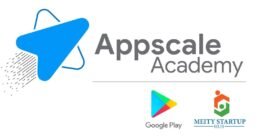Computing has already accelerated scientific discovery. Now scientists say a combination of advanced AI with next-generation cloud computing is turbocharging the pace of discovery to speeds unimaginable just a few years ago.
Microsoft and the Pacific Northwest National Laboratory (PNNL) in Richland, Washington, are collaborating to demonstrate how this acceleration can benefit chemistry and materials science – two scientific fields pivotal to finding energy solutions that the world needs.
Scientists at PNNL are testing a new battery material that was found in a matter of weeks, not years, as part of the collaboration with Microsoft to use to advanced AI and high-performance computing (HPC), a type of cloud-based computing that combines large numbers of computers to solve complex scientific and mathematical tasks.

As part of this effort, the Microsoft Quantum team used AI to identify around 500,000 stable materials in the space of a few days.
The new battery material came out of a collaboration using Microsoft’s Azure Quantum Elements to winnow 32 million potential inorganic materials to 18 promising candidates that could be used in battery development in just 80 hours. Most importantly, this work breaks ground for a new way of speeding up solutions for urgent sustainability, pharmaceutical and other challenges while giving a glimpse of the advances that will become possible with quantum computing.
“We think there’s an opportunity to do this across a number of scientific fields,” says Brian Abrahamson, the chief digital officer at PNNL. “Recent technology advancements have opened up the opportunity to accelerate scientific discovery.”
PNNL is a U.S. Department of Energy laboratory doing research in several areas, including chemistry and materials science, and its objectives include energy security and sustainability. That made it the ideal collaborator with Microsoft to leverage advanced AI models to discover new battery material candidates.
“The development of novel batteries is an incredibly important global challenge,” Abrahamson says. “It has been a labor-intensive process. Synthesizing and testing materials at a human scale is fundamentally limiting.”
Learning through trial and error
The traditional first step of materials synthesis is to read all the published studies of other materials and hypothesize how different approaches might work out. “But one of the main challenges is that people publish their success stories, not their failure stories,” says Vijay Murugesan, materials sciences group lead at PNNL. That means scientists rarely benefit from learning from each other’s failures.
The next traditional scientific step is testing the hypotheses, typically a long, iterative process. “If it’s a failure, we go back to the drawing board again,” Murugesan says. One of his previous projects at PNNL, a vanadium redox flow battery technology, required several years to solve a problem and design a new material.

The traditional method requires looking at how to improve on what has been done in the past. Another approach would be to take all the possibilities and, through elimination, find something new. Designing new materials requires a lot of calculations, and chemistry is likely to be among the first applications of quantum computing. Azure Quantum Elements offers a cloud computing system designed for chemistry and materials science research with an eye toward eventual quantum computing, and is already working on these kinds of models, tools and workflows. These models will be improved for future quantum computers, but they are already proving useful for advancing scientific discovery using traditional computers.
To evaluate its progress in the real world, the Microsoft Quantum team focused on something ubiquitous in our lives – materials for batteries.
Teaching materials science to AI
Microsoft first trained different AI systems to do sophisticated evaluations of all the workable elements and to suggest combinations. The algorithm proposed 32 million candidates – like finding a needle in a haystack. Next, the AI system found all the materials that were stable. Another AI tool filtered out candidate molecules based on their reactivity, and another based on their potential to conduct energy.
The idea isn’t to find every single possible needle in the hypothetical haystack, but to find most of the good ones. Microsoft’s AI technology whittled the 32 million candidates down to about 500,000 mostly new stable materials, then down to 800.
“At every step of the simulation where I had to run a quantum chemistry calculation, instead I’m calling the machine learning model. So I still get the insight and the detailed observations that come from running the simulation, but the simulation can be up to half a million times faster,” says Nathan Baker, Product Leader for Azure Quantum Elements.
AI may be fast, but it isn’t perfectly accurate. The next set of filters used HPC, which provides high accuracy but uses a lot of computing power. That makes it a good tool for a smaller set of candidate materials. The first HPC verification used density functional theory to calculate the energy of each material relative to all the other states it could be in. Then came molecular dynamics simulations that combined AI and HPC to analyze the movements of atoms and molecules inside each material.
This process culled the list to 150 candidates. Finally, Microsoft scientists used HPC to evaluate the practicality of each material – availability, cost and such – to trim the list to 23 – five of which were already known.
Thanks to this AI-HPC combination, discovering the most promising material candidates took just 80 hours.
The HPC portion accounted for 10 percent of the time spent computing – and that was on an already-targeted set of molecules. This intense computing is the bottleneck, even at universities and research institutions that have supercomputers, which not only are not tailored to a specific domain but also are shared, so researchers may have to wait their turn. Microsoft’s cloud-based AI tools relieve this situation.
Broad applications and accessibility
Microsoft scientists used AI to do the vast majority of the winnowing, accounting for about 90 percent of the computational time spent. PNNL materials scientists then vetted the short list down to half a dozen candidate materials. Because Microsoft’s AI tools are trained for chemistry, not just battery systems, they can be used for any kind of materials research, and the cloud is always accessible.
“We think the cloud is a tremendous resource in improving the accessibility to research communities,” Abrahamson says.

Today, Microsoft supports a chemistry-specific copilot and AI tools that together act like a magnet that pulls possible needles out of the haystack, trimming the number of candidates for further exploration so scientists know where to focus. “The vision we are working toward is generative materials where I can ask for list of new battery compounds with my desired attributes,” Baker says.
The hands-on stage is where the project stands now. The material has been successfully synthesized and turned into prototype batteries that are functional and will undergo multiple tests in the lab. Making the material at this point, before it’s commercialized, is artisanal. One of the first steps is to take solid precursors of the materials and to grind them by hand with a mortar and pestle, explains Shannon Lee, a PNNL materials scientist. She then uses a hydraulic press to compact the material into a dime-shaped pellet. It goes into a vacuum tube and is heated to 450 to 650 degrees Celsius (842 to 1202 degrees Fahrenheit), transferred to a box to keep it away from oxygen or water, and then ground into a powder for analysis.
For this material, the 10-or-more-hour process is “relatively quick,” Lee says. “Sometimes it takes a week or two weeks to make a single material.”
Then hundreds of working batteries must be tested, over thousands of different charging cycles and other conditions, and later different battery shapes and sizes to realize commercial use. Murugesan dreams of the development of a digital twin for chemistry or materials, “so you don’t need to go to a lab and put this material together and make a battery and test it. You can say, ‘this is my anode and this is my cathode and that’s the electrolyte and this is how much voltage I’m going to apply,’ and then it can predict how everything will work together. Even details like, after 10,000 cycles and five years of usage, the material performance will be like this.”
Microsoft is already working on digital tools to speed up the other parts of the scientific process.
The lengthy traditional process is illustrated by lithium-ion batteries. Lithium got attention as a battery component in the early 1900s, but rechargeable lithium-ion batteries didn’t hit the market until the 1990s.
Today, lithium-ion batteries increasingly run our world, from phones to medical devices to electric vehicles to satellites. Lithium demand is expected to rise five to ten times by 2030, according to the U.S. Department of Energy. Lithium is already relatively scarce, and thus expensive. Mining it is environmentally and geopolitically problematic. Traditional lithium-ion batteries also pose safety issues, with the potential to catch fire or explode.
Many researchers are looking for alternatives, both for lithium and for the materials used as electrolytes. Solid-state electrolytes show promise for their stability and safety.
Surprising results
The newly discovered material PNNL scientists are currently testing uses both lithium and sodium, as well as some other elements, thus reducing the lithium content considerably – possibly by as much as 70 percent. It is still early in the process – the exact chemistry is subject to optimization and might not work out when tested at larger scale, Abrahamson cautions. He points out that the story here is not about this particular battery material, but rather the speed at which a material was identified. The scientists say the exercise itself is immensely valuable, and it has revealed some surprises.
The AI-derived material is a solid-state electrolyte. Ions shuttle back and forth through the electrolyte, between the cathode and the anode, ideally with minimal resistance.

It was thought that sodium ions and lithium ions couldn’t be used together in a solid-state electrolyte system because they are similarly charged but have different sizes. It was assumed that the structural framework of a solid-state electrolyte material couldn’t support the movement of two different ions. But after testing, Murugesan says, “we found that the sodium and lithium ions seem to help each other.”
The new material has a bonus, Baker says, because its molecular structure naturally has built-in channels that help both ions move through the electrolyte.
Work on the new material is in early stages but “irrespective of whether it’s a viable battery in the long run, the speed at which we found a workable battery chemistry is pretty compelling,” Abrahamson says.
Additional discoveries are still possible. Murugesan and his team have yet to make and test most of the other new material candidates that the Microsoft models suggested. The collaboration continues, with PNNL computational chemists learning to use the new tools, including a copilot trained on chemistry and other scientific publications.
“With Microsoft and PNNL, this is an enduring collaboration to accelerate scientific discovery, bringing the power of these computational paradigm shifts to bear, with the chemistry and material science that are a hallmark strength of the Pacific Northwest National Laboratory,” Abrahamson says.
“We’re sitting on the precipice of this maturation of the artificial intelligence models, the computational power needed to train and make them useful, and the ability to train them on specific scientific domains with specific intelligence,” he adds. “That, we believe, is going to usher in a new era of acceleration. That is exciting, because these problems matter to the world.”













